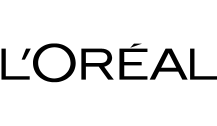
Every product tells a story.
However, space on-pack is finite and there will always be a limit to the amount of information physical labels can carry.
QR codes powered by GS1 allow your brand to break free from the limitations of physical packaging to connect with consumers, authenticate your products, improve accessibility, communicate regulations and recalls, and contribute to the circular economy.
One smarter barcode, many possibilities
QR codes powered by GS1 unlock a world of possibilities for businesses looking to break free of the limitations of physical packaging.
QR codes powered by GS1 allow businesses to connect their products’ unique identity to multiple online sources of enriched, dynamic content. They can be scanned by smartphones and at the point of sale, enabling capabilities far beyond what a standard barcode can offer today.
QR codes powered by GS1 help your audience shop with confidence.
Thanks to GS1 standards, QR codes powered by GS1 can link directly to a product’s verified unique identity and characteristics. This could include allergy information, rules and regulations, life cycle data and more, all while future proofing your packaging in line with the next generation of GS1 standards.
The benefits of QR codes powered by GS1 extend way beyond an ordinary barcode. With just one quick scan from a smartphone or handheld scanner, a wealth of information opens up to inspire more informed and personalised decision-making, whether at home, in store, in the stockroom, warehouse and beyond.
Product knowledge, sustainability, recycling, inclusive packaging are all enhanced with next generation of barcodes, which can deliver real-time data on consumer behaviour.
Brands already on board
QR codes powered by GS1 enable new capabilities to expand consumer engagement and provide a curated experience tailored to the individual product. This framework will allow expanded sharing of nutritional, brand, allergen, sustainability, recycling, loyalty programmes and other consumer-centric information. PepsiCo is working to inspire and share our vision to fuel this global transformation to smart packaging across the CPG industry.Senior vice president, PepsiCo
Core features
Brand & product information
Scan to access comprehensive product information including lifestyle, usage instructions, nutritional values and traceability details with confidence.
Accessibility
Provide the UK’s two million blind and partially sighted people with improved access to product information and allergens for a more inclusive shopping experience.
Regulation & legislation
Adapt to changing regulatory demands (e.g. Digital Product Passports, Extended Producer Responsibility and EU labelling requirements) in real-time, without having to alter your physical packaging.
Sustainability & recycling
Provide consumers with location specific recycling instructions, while also being able to track product lifecycles through to Digital Deposit Return Schemes and other circular economy initiatives.
Case studies
FAQs
Curious about how QR codes powered by GS1 can revolutionise your business? Check out our frequently asked questions.
A QR code powered by GS1 is a QR code that has been encoded with a GS1 Digital Link. The GS1 Digital Link defines how to combine GS1 identifiers, such as GTINs, with domain names. This creates unique, powerful digital identifiers that serve as gateways to digital content.
QR codes powered by GS1 can be read by smartphones and scanning systems used the world over, both at the point of sale and throughout the supply chain.
QR codes are enhanced 2D barcodes with higher storage capacity than traditional linear barcodes. While EAN/UPC barcodes hold up to 13 digits, QR codes can store over 4,000 alphanumeric characters and can be scanned from any orientation using smartphones or image-based scanners.
QR codes powered by GS1 not only link to web content, they also contain unique digital product identifiers, facilitating seamless connections across a broad range of B2B and B2C channels.
They empower stakeholders with control over online content customisation and enable supply chain traceability by encoding additional data like batch numbers and expiry dates. QR codes powered by GS1 can do anything a regular QR code can do and so much more.
Globally, GS1 aims to ensure a comprehensive rollout by 2027. EAN/UPC barcodes will not suddenly disappear. This is the date that the retail industry anticipates having the ability to scan 2D barcodes at point of sale.
Current retail systems and scanners need updating And manufacturers will need to update printing capabilities to mark the new symbols in pack. Whilst some organisations will be able to rapidly transition to 2D barcodes, some stakeholders will still require EAN/UPC barcodes.
This means there will be a period of gradual transition, where both symbols are appear on pack until the use of QR codes powered by GS1 becomes widespread.
While many pieces of hardware can print or scan QR codes powered by GS1 with just a simple software update, others will need updating. If you want to dynamically print QR codes that are encoded with more detail than a URL link and GTIN, there will need to be a process change on your supply line.
In all cases, you will need to speak to your hardware and software suppliers to find out what is possible.
At present a EAN/UPC is still needed on-pack when selling in store. This will ensure that during this period of transition, the QR codes can be scanned by retailers who have updated their systems, and the traditional linear barcodes will still be scanned by those retailers who haven’t.
QR code powered by GS1 implementations can be simple inexpensive. For example, if only the GTIN is encoded in the QR, it will not require a significant overhaul of any software or hardware. It would just require a small artwork update and some changes to your website.
If dynamic data, such as dates and batch, are going to be encoded in the QR, then this will require some investment for brands and retailers across their printer, scanner, production line, point of sale and data systems. The cost of this really is dependent on case-by-case basis. We’d recommend bringing in your solution providers as early as possible to determine figures accurate to your business.
The process of transitioning to QR codes powered by GS1 may vary depending on a number of factors, such as:
- Whether or not you are already using QR codes to engage with your consumers
- Your product and its packaging
- The use cases you want to prioritise
- The type and amount of data you want to encode
- The type and amount of digital content you want to link to
- Your manufacturing processes and partners
Get future ready today
Kickstart your business transformation by unlocking the power of next generation barcodes. Submit your details below to be contacted by a member of our team.









